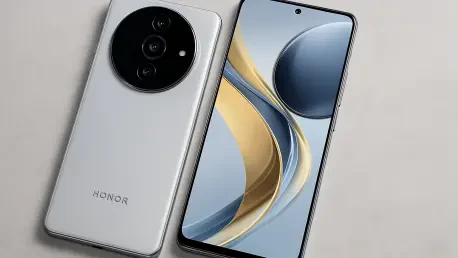I’m thrilled to sit down with Oscar Vail, a renowned technology expert whose insights into emerging fields like quantum computing, robotics, and open-source projects have made him a trusted voice in the industry. With a finger on the pulse of smartphone advancements, Oscar is the perfect person to guide us through the latest developments surrounding the Honor Magic 8 Lite 5G, a device generating buzz after its recent appearance on the GCF certification. In this conversation, we’ll dive into what this certification reveals about the phone’s capabilities, explore its connectivity features, and discuss how it fits into Honor’s broader lineup and launch strategy.
Can you walk us through the significance of the Honor Magic 8 Lite 5G being spotted on the GCF certification?
Absolutely. The GCF certification, or Global Certification Forum, is a critical step for smartphones before they hit the market. It ensures that a device meets international standards for mobile network compatibility and performance. For the Honor Magic 8 Lite 5G, this listing not only confirms its existence but also signals that it’s close to launch, as manufacturers typically seek this approval late in the development cycle. It’s a stamp of readiness for global markets, showing that the device has been tested for interoperability across different networks.
What specific details about the Honor Magic 8 Lite 5G did this certification uncover?
The GCF listing revealed quite a bit about the phone’s identity and capabilities. For starters, it confirmed the model number MTN-NX1M, which aligns with earlier sightings elsewhere. More importantly, it verified that this is indeed a 5G-enabled device and provided a detailed breakdown of the network bands it supports across 2G, 3G, 4G, and 5G. This gives us a clear picture of where and how well the phone will perform in terms of connectivity around the world.
Speaking of model numbers, can you elaborate on what we know about those associated with this device?
Sure. So far, two model numbers have been linked to the Honor Magic 8 Lite 5G: MTN-NX1M and MTN-NX3. These variations could indicate different configurations or regional variants of the device. It’s common for manufacturers to assign multiple model numbers to account for differences in hardware or carrier-specific versions. Both of these have popped up in various places, which suggests Honor is preparing for a broad rollout.
Where else have these model numbers been spotted besides the GCF certification?
Interestingly, prior to the GCF listing, the model numbers MTN-NX1M and MTN-NX3 appeared on the Google Play Console’s supported devices list. This is another key indicator of an impending launch, as it shows the device is being prepped for software compatibility and app optimization. Seeing it across multiple platforms like this reinforces that Honor is in the final stages of bringing the Magic 8 Lite to market.
Let’s dive into the connectivity features revealed by the GCF certification. How does the Honor Magic 8 Lite 5G stack up in terms of network support?
The certification paints a pretty comprehensive picture of the device’s connectivity prowess. It supports a wide range of bands across multiple generations of mobile networks, which is crucial for global usability. For 2G, it covers GSM 850, 900, 1800, and 1900 with EDGE Class 12. On 3G, it includes WCDMA bands I, II, V, and VIII, with solid HSDPA and EUL capabilities. For 4G, it’s equipped with a robust set of LTE FDD and TDD bands, including 1, 2, 3, 4, 5, 7, 8, 20, 28, 32, 38, 40, and 41. And of course, as a 5G device, it supports both standalone and non-standalone modes with an extensive list of frequency bands in the FR1 range, like n1, n3, n5, n7, n8, n20, n28, n38, n40, n41, n77, and n78. This kind of coverage suggests it’s built to work seamlessly in most regions.
Beyond network bands, what other interesting features or capabilities did the GCF listing confirm for this smartphone?
The GCF certification went beyond just connectivity and highlighted some practical features. For one, it confirmed MMS capability, which, while not groundbreaking, is still essential for multimedia messaging in many markets. It also noted support for removable UICC, meaning traditional physical SIM cards, alongside non-removable eUICC, which could point to a soldered SIM in certain variants—often seen in carrier-locked models. Additionally, the listing mentioned RSP, or Remote SIM Provisioning, which ties into eSIM compatibility. This is a big deal for users who value flexibility, as it allows for remote carrier switching without needing a physical SIM swap.
Shifting gears to the launch timeline, what can you tell us about the expected debut of the Honor Magic 8 series?
From what we’ve gathered, the Honor Magic 8 series, which includes the standard Magic 8 and Magic 8 Pro, is slated to launch later this month in China. That’s the initial rollout. The Magic 8 Lite, however, seems to be following a different strategy, likely debuting exclusively in global markets at a later date, much like how previous Lite models were handled. There’s still some uncertainty around whether the standard Magic 8 will stay exclusive to China or see a global release, but the Lite variant’s certifications suggest it’s being primed for international audiences.
How do you see the Honor Magic 8 Lite 5G fitting into Honor’s overall smartphone lineup and strategy?
The Magic 8 Lite appears to be positioned as an accessible yet capable option within Honor’s portfolio, targeting users who want 5G and modern features without the premium price tag of flagship models like the Magic 8 Pro. Compared to previous Lite models, it seems to continue the trend of offering solid performance with a focus on connectivity and practicality, as seen with the eSIM support and broad network compatibility. It’s a smart move by Honor to cater to diverse markets, especially globally, where affordability and versatility are key drivers for many consumers.
Looking ahead, what is your forecast for the impact of devices like the Honor Magic 8 Lite 5G on the mid-range smartphone market?
I think devices like the Honor Magic 8 Lite 5G are going to keep pushing the boundaries of what mid-range smartphones can offer. With robust 5G support, eSIM capabilities, and wide network compatibility, it’s setting a high bar for competitors in this price segment. My forecast is that we’ll see more brands doubling down on these features to capture the growing demand for affordable 5G devices, especially in emerging markets. This could accelerate the adoption of next-gen connectivity worldwide, while also putting pressure on premium models to justify their higher costs with truly standout innovations.









